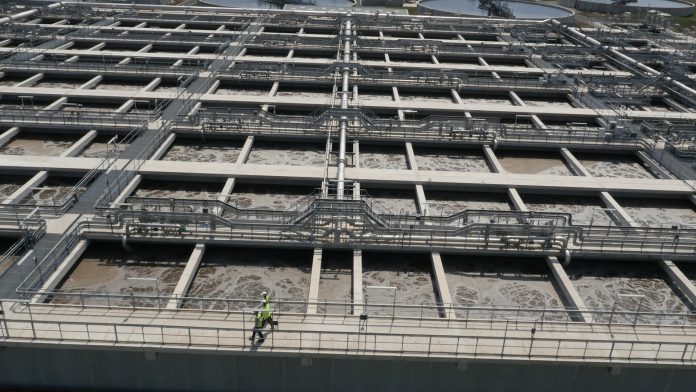A new partnership between United Utilities and Changemaker 3D Ltd has moved forward the possibilities of concrete printing technology to benefit the construction industry
The methodology, a first for the UK, was developed by ChangeMaker 3D and was incubated in the North West water company’s latest innovation lab. It could have enormous environmental, time and cost savings and be an important factor in the sector’s race to net zero carbon by 2030.
The projected reduction in carbon emissions alone for an onsite printed wastewater distribution chamber is 25%, with a 20% reduction in cost and even bigger savings in time and labour. United Utilities own over 200 distribution chambers across the North West.
To test the concept, Changemaker3D and United Utilities engineers joined forces.
ChangeMaker 3D enlisted strategic input from long-standing partners AutoMutatio, change management experts, and Constructure – leading consultants in structural design.
The combined team needed a substantial product with enough complexity and risk to challenge traditional technologies and push forward the boundaries of onsite construction. They chose to model a real-life wastewater distribution chamber, which was actually being built at a site in Cumbria.
Over the course of 10-weeks, an accurate digital model was created for the 1.8m diameter cylindrical chamber, including interior dividing walls, which in real-life would be partially submerged 1.4m below ground.
The next step will be to manufacture a prototype offsite in a factory, which can be subjected to rigorous construction tests to make sure it meets the operational, strength and durability requirements for such a key piece of kit.
Analysing the 3D digital model
Selwyn Rose, innovation strategy manager for United Utilities said: “Until now, most UK concrete printing has been focussed on standard items prefabricated in factories. More complex made-to-measure items have tended to be manufactured overseas and shipped to site.”
Natalie Wadley, director Changemaker 3D, said: “By analysing the 3D digital model with a traditional design we were able to draw comparisons which suggest a 25% reduction in carbon, a 20% reduction in cost, construction time cut by half, and the amount of labour by 55%.
“Low carbon concrete printing also removes several steps from the construction process which in turn enhances safety. It reduces the need for working at height and in confined spaces.”
United Utilities’ chief innovation engineer, Lisa Mansell said: “We are really excited by this technology. The sector has big challenges on the time and cost of construction across this current AMP, but the biggest challenge for the water industry right here and now is reducing our carbon footprint.
“One of our biggest carbon impacts is construction projects, particular where we need to use concrete solutions.
“What we now need to do is show that it works physically, testing the finished article is structurally sound, technically feasible and passes tests on things like water permeability. This will help us get our construction partners comfortable with it.’

















